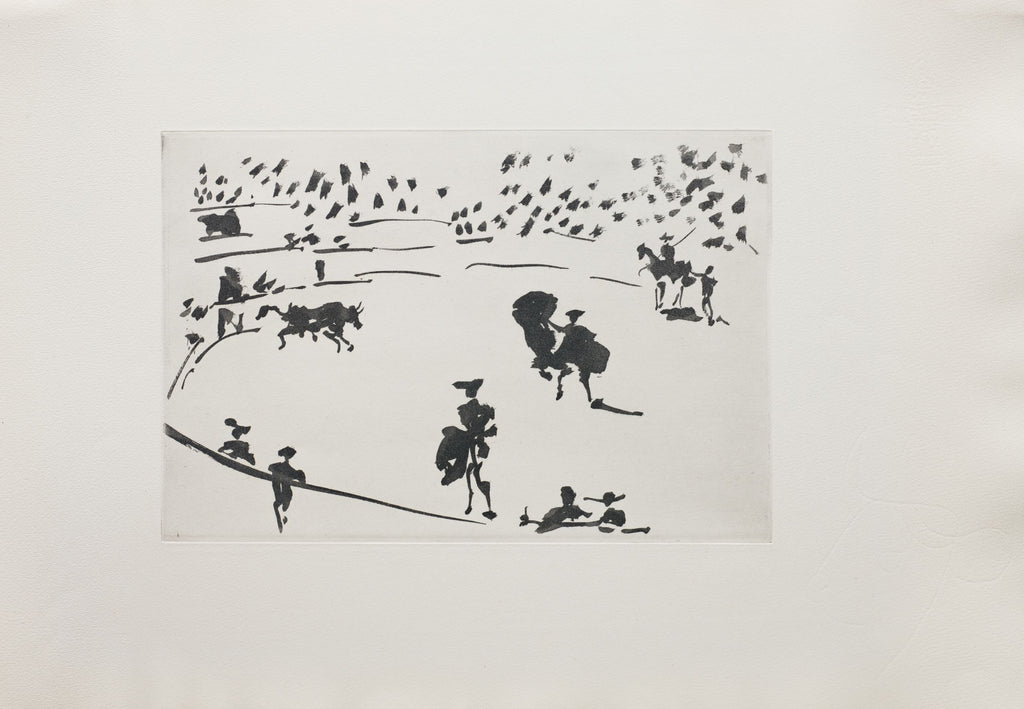Upload a photo of your space
For best results we recommend marking 10 inches on your wall with tape to get a sense of scale. Make sure to have the floor visible in the photo.





About the Work
About the Artist
Pablo Ruiz Picasso was born on October 26, 1881, in Malaga, Spain. His father was a professor in the School of Arts and Crafts and often took him to bullfights which would influence much of his art throughout his career. It is said that Picasso learned to draw before he could speak. Picasso studied the works and styles of many Spanish artists including Francisco Goya, El Greco, and Diego Velázquez. At the beginning of the 1900s, Picasso moved to Paris, France to open his own studio. He was lonely and depressed after the death of a close friend, which ignited what is now known as his “Blue Period”. A few years later, Picasso started the “Rose Period”, which introduced warmer colors to his works. Picasso is commonly known as the pioneer of Cubism, in which objects are broken apart and reassembled in an abstracted form; it is destructive and creative. Cubism shocked, appalled and fascinated the art world.
Please utilize the AR experience in a well-lit room.
Scan the room for surface detection.

Artwork will place in your room.
Using your fingers, align the horizontal white line
with your floor.

Double tap the artwork to scale to 100% size
and pinch to move on the screen.










